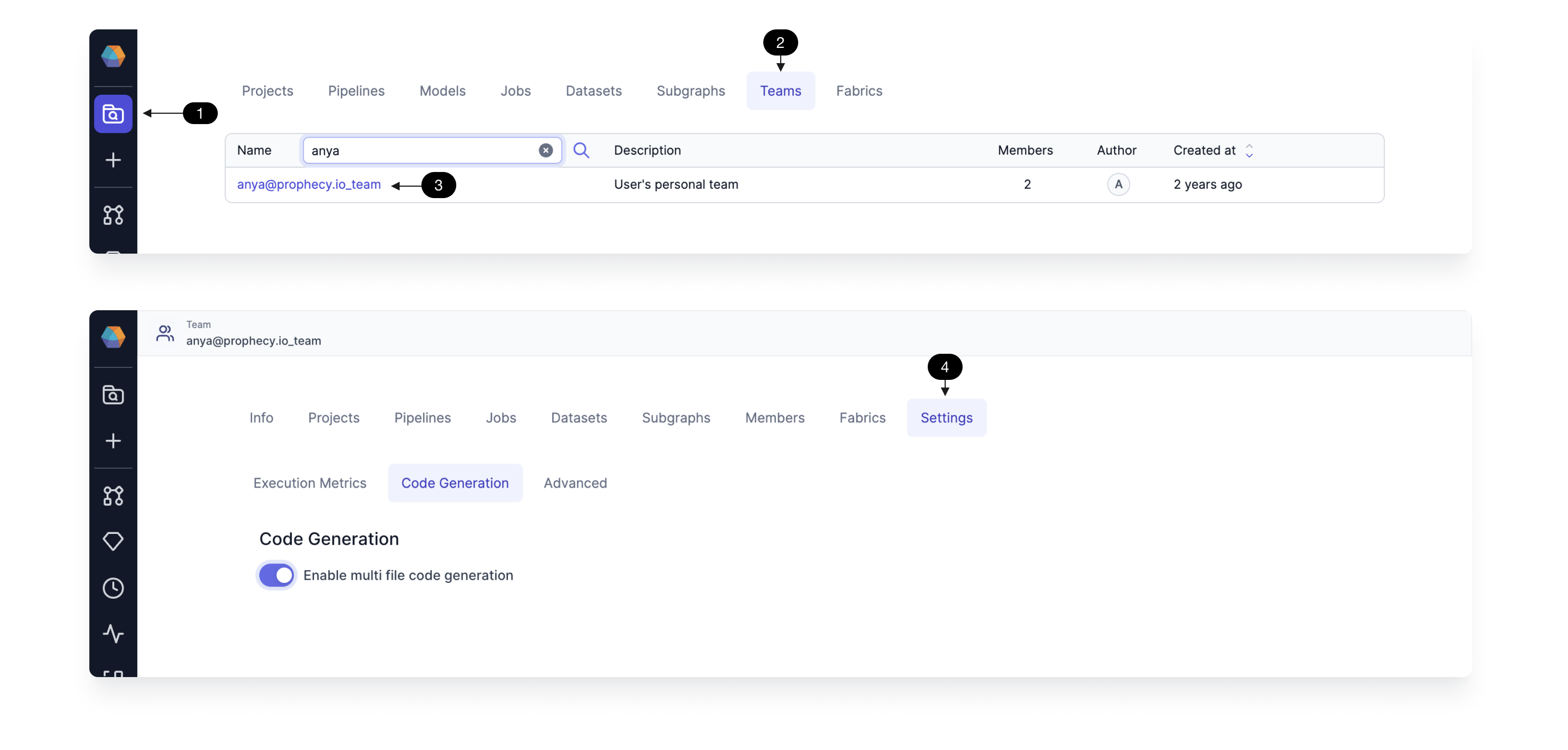Teams and users
Teams represent groups of users who collaborate on projects and share access to resources. When you create a project or a fabric, you assign it to a team. All users in that team will have access to the relevant project or fabric.
There are two types of teams:
- Personal teams. When you start using Prophecy, you are automatically assigned to your own one-person team. You are also the team admin of this team. If you want a project or fabric to be accessible only to yourself, you can assign it to your personal team and keep it private.
- Shared teams. Your team administrator typically creates additional team groupings. Team structures will vary across organizations.
Team, user, and Git settings can be accessed by clicking the ... ellipses menu and the gear icon at the bottom of the left navigation bar.
Team admins
Team admins manage teams in Prophecy. They usually create teams and fabrics. Team admins are different from Prophecy cluster admins who manage Prophecy installation and deployment.
Team metadata
Manage the entities within a team by accessing the team's metadata page. Click (1) Metadata, (2) Teams, and select the (3) team of interest. Now you can see all the metadata for that team, including which projects, pipelines, and jobs are owned by that team.
In a team's metadata page, only the team admin can view and manage the (4) Settings for the team.

This table describes each tab within the team settings.
| Tab | Description |
|---|---|
| Execution Metrics | Displays metrics and data samples for each execution. |
| Code Generation | Enables multi-file code generation in the case of code payload size limitations. |
| Advanced | Lets you update the artifactid, generative AI settings, etc. for a team's projects. |